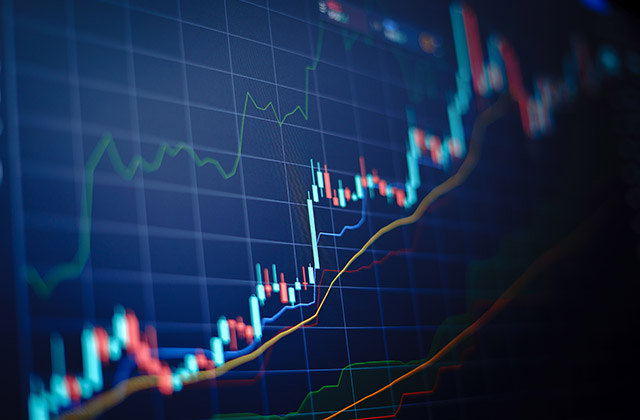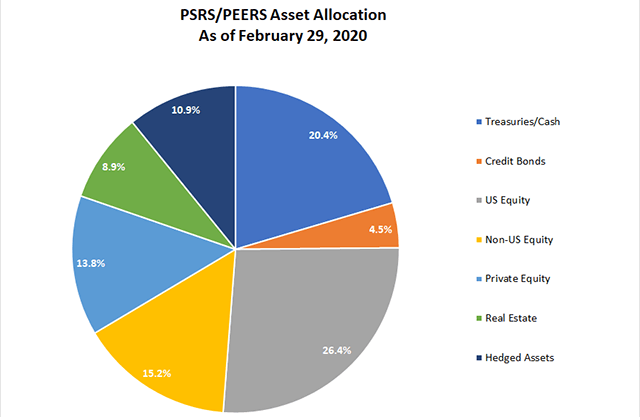Coronavirus and the Investment Environment

In recent weeks, the COVID-19 virus (more commonly referred to as “the coronavirus”) has spread throughout the world. If the rate of spread in the United States is comparable to that of other nations, the number of reported cases in the U.S. could increase substantially in the next few months.
World stock markets are generally down 25% this calendar year due to fears over the coronavirus. It is possible that markets could drop further as the ultimate impact of the virus is measured. Interest rates have plummeted as investors have piled into bonds as a safe haven from the turmoil. We are witnessing historic volatility in the financial markets as both bonds and stocks react violently to uncertainty over the pandemic.
Economic Impact
Fundamentally, the economic impact of the virus is real and is being felt on both the supply side and the demand side. China was the first, of now several countries, to institute draconian measures to slow the spread of the virus. Factories, stores and schools were closed. Production of critical goods intended for export to the rest of the world (car parts, electronic components, cell phones, medicines, etc.) ground to a halt. This is the so-called “supply chain disruption” that is impacting businesses throughout the world who rely on these inputs.
On the demand side, the closure of businesses, the cancellation of concerts and conferences, cutbacks on leisure travel, etc. will slow consumer spending. As consumers cut back, businesses will be forced to respond by laying off workers. As employment falls, jobless workers have less to spend. We thus find ourselves in a self-reinforcing feedback loop that could lead to recession.
However, there could be reasons for optimism. Only time will tell, but markets may be overreacting to a worst-case scenario that, hopefully, will never materialize. The rate of spread in China and some of the other early-hit countries has begun to level off, and there are some signs of businesses resuming operations. The U.S. has the finest healthcare system in the world, and it is possible that our experience will be better than that of other countries. Near-term economic growth will certainly suffer, but many economists believe the U.S. could avoid a recession and that growth could rebound later this year.
Your PSRS/PEERS Investments
PSRS and PEERS are defined benefit plans. Unlike defined contribution plans such as 401(k) or IRA accounts, your benefit is not influenced by market volatility and will not fluctuate. The investment assets of the Systems are managed by a professional investment staff, and the Board of Trustees’ overall mission remains investing the Systems’ assets in a manner to earn the 7.5% actuarial assumed rate of return over a long-term horizon.
All large institutional investors that are invested in the stock market were negatively affected by the recent downturn in the market due to the coronavirus. However, only a portion of the PSRS/PEERS assets are invested in the stock market. This diversification into other asset classes such as bonds, cash and real estate preserves capital and provides the Systems with a moderate degree of downside protection in periods of economic stress.
As the stock market continued to reach new highs in 2019, the PSRS/PEERS investment staff re-balanced significant assets out of stocks and into U.S. Treasury bonds and private assets such as real estate and private equity. This re-balancing allowed the Systems to maintain a diversified and balanced asset allocation. Treasury bonds are the safest and most liquid assets in the world today. As of February 29, 2020, the Systems had over $9 billion invested in high quality bonds including U.S. Treasury securities.
The following chart shows the PSRS/PEERS asset allocation, which is highly diversified among several different investment classes.

The Systems remain mindful of the day-to-day volatility within the financial markets as the latest crisis continues to unfold, and are in communication with various market participants to evaluate potential developments. We continue to believe that until there is more clarity, there will be difficult times ahead. However, PSRS/PEERS is particularly well-suited to navigate upcoming markets given our ability to invest over a 30-year time horizon. While unpleasant to go through, ultimately, the investment environment will offer opportunities for patient, long-term investors such as PSRS and PEERS. Diversification is important to weather the storm and gives our team the ability to potentially take advantage of attractive investment opportunities (particularly in private credit and public equity) that surface during market turmoil. Over the long-term, we believe this ability to prudently buy inexpensive assets through various market environments will provide consistent and meaningful investment returns for the Systems.
We want to emphasize to all our members that your PSRS/PEERS benefits are secure. The Board and professional staff are committed to managing the Systems’ assets in a prudent manner that will ensure the viability of your pension.
The market value of invested assets for PSRS and PEERS combined were approximately $45.4 billion on February 29, 2020, making the joint entity larger than all other public retirement plans in Missouri combined, and the 45th largest defined benefit plan in the United States. For up to date PSRS/PEERS investment news, continue to visit us at www.psrs-peers.org